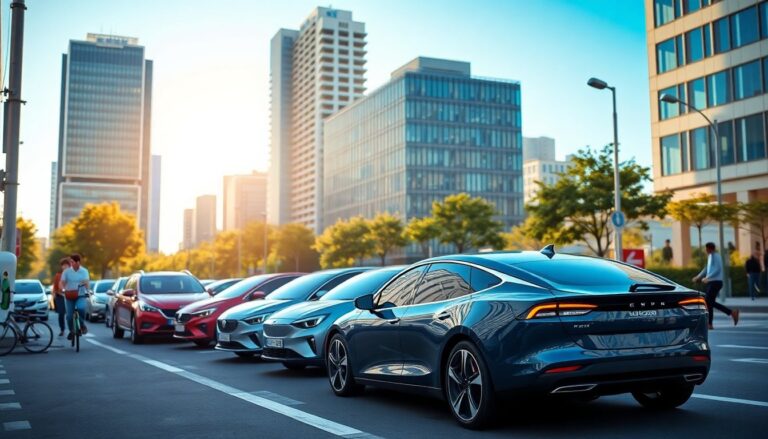Argomenti trattati
The automotive industry is undergoing a profound transformation, primarily driven by the rise of electric vehicles (EVs). This shift represents a paradigm shift that will redefine transportation in the coming decades. With advancements in technology, environmental concerns, and evolving consumer preferences, the future of EVs appears promising.
This article explores the history of electric vehicles, examines the current landscape, and speculates on their potential impact on the automotive sector. Understanding this evolution is essential for anyone interested in the future of transportation.
The history of electric vehicles
The journey of electric vehicles began in the late 19th century. By the 1830s, inventors like Robert Anderson were experimenting with electric carriages. However, it wasn’t until the late 1800s that commercially viable electric vehicles emerged. The Baker Electric, introduced in 1899, gained popularity, particularly among affluent individuals.
Yet, the rise of the internal combustion engine (ICE) in the early 20th century, coupled with mass production techniques pioneered by Henry Ford, led to the decline of electric vehicles. Gasoline-powered vehicles became more affordable, supported by a widespread refueling infrastructure. Consequently, EVs faded into obscurity for decades.
Interest in electric vehicles resurfaced in the late 20th century, driven by environmental awareness and technological advancements. The introduction of the Toyota Prius in 1997 marked a pivotal moment, as it combined a gasoline engine with electric technology, popularizing the concept of hybrid vehicles.
The current landscape of electric vehicles
The electric vehicle market is experiencing unprecedented growth. Global sales of electric vehicles surged over 40% in 2022 alone, with major markets such as China, the United States, and various European countries leading the charge. This growth is fueled by several factors:
Advancements in technology
Significant improvements in battery technology have been crucial in making electric vehicles more practical and appealing. Modern EVs now achieve ranges exceeding 300 miles on a single charge, addressing one of the major concerns consumers had regarding range anxiety. Furthermore, the decreasing cost of batteries has enhanced affordability, contributing to their growing popularity.
Government incentives and policies
Many governments worldwide are implementing policies to encourage the adoption of electric vehicles. This includes tax incentives, rebates, and stringent emission regulations for traditional vehicles. Countries like Norway have set ambitious targets to phase out gasoline and diesel cars entirely, making EVs the preferred choice.
As a result, automakers are investing heavily in electric vehicle development. Traditional automotive giants like Ford and General Motors are launching their EV models, while new players like Tesla continue to innovate. The competition in the electric vehicle market is fierce, leading to a wider variety of options for consumers.
The future of electric vehicles
The trajectory for electric vehicles appears promising. Projections indicate that by 2030, EVs could account for as much as 30% of all vehicle sales globally. However, the future presents challenges. Infrastructure for charging must expand to accommodate the growing number of electric vehicles on the road.
This article explores the history of electric vehicles, examines the current landscape, and speculates on their potential impact on the automotive sector. Understanding this evolution is essential for anyone interested in the future of transportation.0
This article explores the history of electric vehicles, examines the current landscape, and speculates on their potential impact on the automotive sector. Understanding this evolution is essential for anyone interested in the future of transportation.1
This article explores the history of electric vehicles, examines the current landscape, and speculates on their potential impact on the automotive sector. Understanding this evolution is essential for anyone interested in the future of transportation.2

